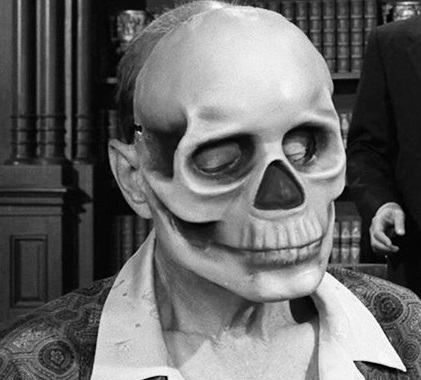I’ve been happily Windows-free for about 5 years, but lately I need some Win-only software including a few games that don’t work at all on Linux. My main questions:
-
How to avoid Windows messing with my Linux install? Having a separate PC is not possible for me right now. I’m considering uninstalling grub and instead selecting the boot device I want from UEFI, idk if this is advisable though.
-
I’m also interested in how to get a Windows install that’s as minimal as possible: I don’t want to log in to a Microsoft account, I don’t want telemetry etc, I only want whatever is strictly required to make my system functional. The one thing I do want is Windows Defender cause ain’t no way I’m dealing with an antivirus.
-
Should I go for Win 11 or stick to 10?
Any tips or experiences are welcome!
Ps: I know this information is probably all out there, but I thought a post in this community about it would be useful for others as well.
UPDATE: I ended up going with a regular old dual boot using Windows 10 iot LTSC - there’s a few games I wanted to run and a driver as well so I chose to install directly on hardware as opposed to a VM. I created the install media using Ventoy, and UNPLUGGED EVERY OTHER DRIVE during installation except the one Windows was supposed to come on. Afterwards I had to boot in with a live Linux USB (the nice thing about Ventoy is that you can write multiple ISOs to your USB so it came in handy) to manually install rEFInd onto the original EFI partition that my Linux install uses, then I just had to set up the correct boot order in UEFI and everything is working. I also had to fuck around on the boot partition and with efibootmgr to remove all traces of grub so things don’t get tangled up which was a bit scary but things are working perfectly now.
Two physical drives. Install windows first in one, then Linux on the other. If you don’t do this order windows boot manager will take over and you’ll have to boot Linux from bios.
I’m not using dual boot anymore, but when I did, I always selected the partition from BIOS, which was totally fine for me. Are there arguments against it?
Only an issue if you don’t disable fast shutdown on Windows. A hibernated system might get surprised if another OS moves files about while it was asleep.
Windows is never going to like an NTFS that has been touched by another OS even if it windows was completely shutdown during that time. Reading the NTFS partition might be okay. But, last I checked none of the Linux drivers could write without windows noticing and fouling things up. If that has changed it would be welcome news to me despite my warning use of windows.
If windows (and to a lesser extent that other OS) came bundled with some ability to mount, read, and write filesystems popular with other operating systems this wouldn’t be such a problem. One shouldn’t have to involve the network stack or 3rd party drivers just to share a partition on the same hardware or a portable drive with a modern file system.
You make windows sound like a hibernating beast.
Will it maybe work if I just unplug my Linux drive during the Win install?
I’d recommend having the Linux drive unplugged during the windows installation. Windows, for some reason, will install the boot loader in an entirely different drive than what you selected. There’s no question or prompt to prevent this. The only way to easily prevent this is to just have the one drive plugged in.
Yeah, I had to disconnect all my SATA HDs to stop the Windows installer from shitting all over them.
I’d be worried about Windows updates doing the same thing now, after the the recent glitch that broke bootloaders.
It’s common for windows updates to delete boot parts or Linux, corrupt grub, etc. That is only when windows and Linux are installed on the same drive together. I have yet to see Windows corruping Linux on a separate drive entirely. Never happened to me despite how much I
mess up my grub updatesdistro hop.
One problem with that is that you will end up with two EFI partitions. This is not supported very well by anything, really, so you will run the risk of Windows messing with the wrong partition anyway.
Yep, dual disks with the Windows installation done first is how I did/do it. GRUB/systemd-boot worked just fine from then on, and I am not on Windows 11, so I didn’t get hit with that fuck-up Microsoft did just a few days ago.
The default actually works pretty well these days.
Messing with the EFI partition, for instance by attempting to have two of those on separate disks, will probably cause you more pain than Windows will. As far as I understand, only one EFI partition can be configured in BIOS as the boot partition, so you will have to change the configuration in BIOS whenever you want to boot to the other OS.
Windows does have a history of changing the default EFI bootloader once in a while; however your chosen bootloader is still there, just not marked as the default anymore. A Windows app like EasyUEFI will let you change the default back.
Windows on external USB drive, disconnected after each use
Letting windows install on its own drive by removing the linux drive (otherwise it will select that drives efi partition), I use systemd boot and I just copied the EFI/Microsoft folder from the windows drive efi partition to the linux efi partition systemd-boot will auto detect it. As for minimal, just use windows 10 ltsc, or windows education and use a debloater tool that is trustworthy (I like winutill).
I like rEFInd
If I have a new PC with a blank hard drive, what should be the install order?
Windows, then rEFInd, then Linux?
I also recommend rEFInd for the bootloader if you don’t want to set anything up (and risk messing up). You don’t need to configure your boot entries, it scans for boot options and shows them with a graphical interface, so your Linux and Windows should just show up.
As for the second question: Windows 11 IoT LTSC has yet to be mention here - the only things that can stop you from using it are legality and convenience.
I’m not sure if W10 has an IoT LTSC version, but W10 LTSC does exist.
-
Get 16gb of ram and CPU less than 5 years old.
-
Install Windows 11 in a VM
-
Install the virtio drivers from the Fedora project link
-
Profit
How good are the virtio GPU drivers?
I’ve only really messed with them on servers with their ancient ass GPUs from like the early 2000s. Back in 2015 I remember running GTA 5 on a 2013 iMac with iris pro. In windows I got 30+ gps at 1080p, and through parallels I got about the same FPS at 720p.
-
a bootable removable medium that can display and chainload all the installed OSes
Windows doesn’t mess with the Linux install anymore, that was with BIOS boot. Just make sure the EFI partition is big enough so you can fit both.
Does it not? I’ve seen posts about grub being borked after Windows updates, or was that only on legacy BIOS systems?
An update borked my eufi setup last year, good riddance, Microsoft.
As far as I know, that only stops out of date versions of grub that have a certain vulnerability from running that would allow escaping Secure Boot. Meh. It doesn’t touch any Linux files or anything and you can boot if you turn off Secure Boot so you can fix it. Long shot from what used to happen where you could only have one boot loader installed at a time so installing Windows would wipe what was there before.
(and by fix it I mean replace grub with systemd-boot)
It’s not supposed to at least. There was a bug recently where it broke the bootloader. But windows is supposed to be able to tell there’s another OS and not break it.
can report UEFI installs of PopOS and Mint were recently borked by a Win11 update.
Not true as of late
I would recommend going for the IoT LTSC versions of Windows.
One thing I’ve been trying lately that’s a bit different: I happen to have an old SSD that had an enclosure with it (kind of like this) which essentially turns it into an external USB drive.
I then used Rufus to install Windows on that drive, using the “Windows To Go” option and also checking the option to not allow Windows to access the internal drives. That way, my laptop can just happily run Linux by itself, and if I need to use Windows for anything I can just plug the drive in, hit F12 on boot and choose to boot from that drive instead. The added bonus is that Windows also can’t mess with anything on my regular system or monkey about with the boot loader.
I’ve only had it on there for about a week but it seems to be working perfectly fine so far!
Oh and also Rufus gives you the option to start with a local account already set up, so you don’t have to do the MS online account bullshit. And then after install I used ShutUp10 to turn off as much telemetry as I could.
Hm this sounds very interesting, it would be pretty convenient, I’ll look into it
The most painless way to dual-boot is to install something that’s not Windows alongside something else that’s not Windows.
If by “these days” you mean a motherboard that supports UEFI, then it honestly doesn’t matter anymore. Your board controls the boot order, and there isn’t an MBR for Windows to mess with anymore. Just plan out your partitioning careful before hand, and if you plan on using a lot of files in both OS’s, make a plain storage partition that is easily mounted under Windows (NTFS does not count).
Honestly, aside from a very scant number of apps or games, there isn’t a real need to dual boot anymore. If you can’t run something under Proton or Wine, having a Windows VM will get the job done.
NTFS does not count
Aren’t NTFS and exFAT pretty much the only option?
If your windows software works in a vm or wine then that might be a better choice for you.
The only thing windows will do with to a Linux install anymore is mess up the boot. People still say two separate drives is the optimal choice to prevent this but it really doesn’t save you from anything but fat fingering your own partitions during the install process and if the disks are the same size/interface/manufacturer it doesn’t do much there either.
So as has always been the case since dual booting existed: install windows first, saving the space you want to use for Linux then install whatever you want. Have your distributions preferred method of repairing failed boot on hand so that when something breaks unexpectedly you can fix it. Often it’s more than a boot repair tool, but an entire bootable environment that can be used for all kinds of purposes.
Use uup dump and rufus to make a windows installer and put it on a usb. I specifically recommend rufus as opposed to dd or other normal way of doing things because it has special options regarding windows oobe and requirements that will be invoked on use.
It doesn’t matter if you choose 10 or 11. Both can be had in ltsc channels. Dealers choice, you’re the one with software that needs it!
Might as well go for Win11, you’re going to have to deal with it next year anyways.
Windows doesn’t do minimal, it does whatever the hell it wants. There are some OOBE tricks to get a local account working.
I have used the privacy.sexy app to strip down some of the most obnoxious Win11 bits - be warned that you have to disable defender to have it work. Is it doing bad things? Is MS doing incredibly shady shit with their detections? Who’s to say? When I turn on Defender afterwards, everything seems “fine”.
There’s no need to get rid of grub, or play games with different boot drives. Get to know how EFI works. Look at efibootmgr’s output - that’s pretty much all that the firmware knows. The firmware has multiple entries consisting of a drive (magic device number), a program path (EFI\grub\grub_x64.efi), and maybe a string to pass along. There is a priority list (0003,0001,0002) which MS occasionally likes to re-arrange.












